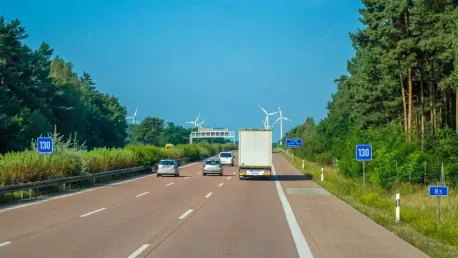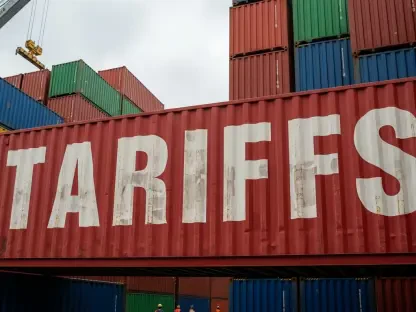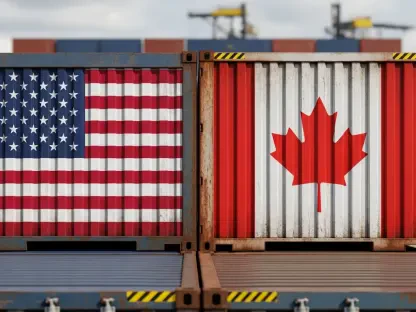The European Commission has recently proposed a significant revision to the Weights and Dimensions (W&D) directive, aiming to set new vehicle weight and length limits that would support the transition to zero-emission vehicles (ZEVs) within the trucking industry. As the world moves towards greener and more sustainable solutions, it is essential to balance these shifts with considerations for road infrastructure wear and economic feasibility. This proposed revision seeks to address the unique challenges posed by ZEVs while promoting cleaner transportation practices.
Current Challenges with Weight Limits
One of the key issues with the existing W&D directive is that it allows ZEV combinations to weigh up to 2 additional tonnes compared to diesel trucks, sharing the same driving axle limit. However, this allowance often falls short of compensating for the additional weight of batteries, particularly those used in long-distance trucking. As a result, ZEVs may reach the 11.50-tonne driving axle limit before fully utilizing the 2-tonne weight allowance for the entire vehicle, leading to a significant payload disadvantage compared to their diesel counterparts. The additional battery packs, typically mounted along the chassis, further exacerbate this weight imbalance and hinder the broader adoption of ZEVs in the trucking sector.
Moreover, the current total weight and axle limits have caused some payload losses in specific scenarios. This situation has delayed the widespread acceptance of ZEVs, as the 2-tonne allowance often does not sufficiently offset the extra weight of the batteries necessary for long hauls. The inability to fully leverage the 2-tonne weight allowance also compromises the payload capacity of ZEVs, further putting them at a disadvantage against diesel trucks in terms of efficiency and economic viability.
Proposed Changes and Concerns
In response to these challenges, the European Commission has proposed a series of changes to the W&D directive to better support ZEVs. The most notable adjustments include increasing the weight allowance for ZEVs from 2 to 4 tonnes, thereby raising their total permissible weight to 44 tonnes. Additionally, the driving axle weight limit would be increased from the current 11.50 tonnes to 12.50 tonnes. However, this proposal has sparked considerable debate among EU Member States due to concerns about the potential adverse impact of higher axle weights on road infrastructure.
A consultancy report by Apollo Vehicle Safety & Research Driven Solutions examined these concerns in detail. They assessed the potential costs to road infrastructure resulting from changes in vehicle and axle weights. Their analysis projected these costs for countries like Germany, Poland, and Romania from 2025 to 2040, based on anticipated ZEV sales and fleet uptake in these markets. The report highlighted the importance of finding a balance between promoting ZEVs and mitigating the negative impact on Europe’s road networks.
Alternative Solutions and Cost Assessments
Exploring alternative solutions, Research Driven Solution assessed the impact of ZEVs on various bridge forms and lengths. Their findings suggested that slightly reducing the proposed weight allowances for 5-axle combinations could ensure that most ZEVs achieve payload parity with 40-tonne diesel trucks. This adjustment would lead to only a minimal increase in road network costs, addressing concerns about infrastructure damage.
For instance, in Germany, this slight reduction would result in just a 1.41% increase in road network costs compared to the current situation. Poland and Romania could achieve similar savings by limiting the increase to 0.72% each. Additionally, shifting more of Europe’s trucking fleet to increased 6-axle combinations could significantly decrease road infrastructure costs. This not only compares favorably to the Commission’s proposal but also offers substantial savings compared to the current W&D rules. This shift would distribute the vehicle’s weight more evenly, reducing road wear and tear and enhancing the economic feasibility of adopting ZEVs.
Policy Recommendations
To balance the need for facilitating ZEV adoption while minimizing the impact on road infrastructure, the article outlines specific policy recommendations. One critical recommendation is the timely review of the W&D directive. EU Member States are urged to reach a consensus on the directive review as soon as possible. This updated directive is essential to enable zero-emission trucks to compete effectively with diesel rigs, thereby accelerating the shift towards clean transportation in the road freight sector.
Another key recommendation is to reduce the ZEV allowance for 5-axle combinations from 4 to 3 tonnes. This reduction would level the playing field with diesel trucks, lower infrastructure costs, and diminish the impact on bridges, making it almost negligible. By doing so, the 5-axle ZEVs can achieve comparable payload capacities without causing significant additional wear on the road infrastructure, thus facilitating a smoother transition to greener trucking options.
Adjusting Axle Limits and Allowances
The article also suggests an adjustment to the driving axle limits and allowances to further minimize road infrastructure costs. Specifically, it proposes increasing the driving axle limit from 11.50 to 11.75 tonnes, which would be sufficient to fully utilize a 3-tonne weight allowance for the entire vehicle. This adjustment strikes a balance between enhancing ZEV capacity and minimizing economic and infrastructural impacts, ensuring a sustainable transition to zero-emission trucks.
Additionally, maintaining the proposed 4-tonne ZEV allowance for 6-axle combinations is recommended. This particular configuration allows for a more evenly distributed weight, reducing road wear and supporting their market uptake without increasing the 19-tonne weight limit for the two rear axles. By ensuring that these vehicles distribute their weight more effectively, the overall wear and tear on the road infrastructure can be minimized, making the adoption of ZEVs more feasible for long-term use.
Opposition to Network Restrictions
Despite these proposed adjustments, the article strongly opposes the Council’s proposal to restrict ZEVs to a limited share of the TEN-T core network. The analysis indicates that combined policy options can effectively prevent negative impacts on road infrastructure, making such restrictions unnecessary and potentially harmful to the commercial vehicle industry’s transition. By focusing on strategic policy adjustments rather than imposing restrictive measures, the transition to zero-emission trucks can be facilitated more seamlessly across the entire road network.
Bernardo Galantini, the Freight and Climate Officer at T&E, emphasized the urgency of reaching an agreement on the W&D directive. He argued that adjusting the Commission’s proposal to balance promoting ZEVs and protecting road infrastructure involved reducing the additional weight for 5-axle combinations to 3 tonnes and their driving axle limit to 11.75 tonnes. Galantini also highlighted the importance of removing restrictions on heavier zero-emission trucks on parts of the TEN-T core network for a smooth transition of Europe’s commercial vehicle industry.
Emphasizing the Urgency of Agreement
The European Commission has proposed a major revision to the Weights and Dimensions (W&D) directive to establish new vehicle weight and length limits that aid the transition to zero-emission vehicles (ZEVs) in the trucking sector. As the global push for greener and more sustainable solutions intensifies, it’s vital to balance these changes with considerations for road infrastructure wear and economic feasibility. This proposed revision aims to tackle the unique challenges posed by ZEVs while encouraging cleaner transportation practices. The trucking industry is a major contributor to carbon emissions, and transitioning to ZEVs is a key part of the European Union’s strategy to reduce its carbon footprint. However, ZEVs, like electric trucks, often have different weight distributions and require adjustments in regulations to ensure they are practical and beneficial. By revising the W&D directive, the EU seeks to create a regulatory framework that supports the adoption of ZEVs, promoting more efficient and sustainable freight transport across Europe.









